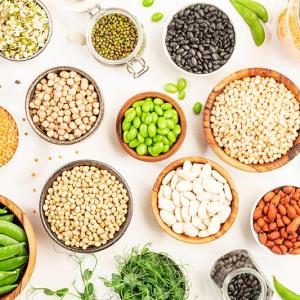Eating legumes may help avert the development of colorectal cancer, according to a study that has found an inverse association between legume consumption and colorectal cancer risk.
On the other hand, no consistent associations have been noted for oral cavity and pharynx, esophagus, stomach, larynx, breast, endometrium, ovary, prostate, and kidney cancers.
“The inverse association between legume consumption and colorectal cancer suggests a possible role of legumes in preventing cancer risk,” said lead author Dr Linia Patel from the Department of Clinical Sciences and Community Health, Università degli Studi di Milano, Milan, Italy.
Patel and her team obtained date from a series of case-control studies conducted in Italy and in the Swiss Canton of Vaud between 1991 and 2009. They used these data to measure the association between legume consumption and cancers of the oral cavity, esophagus, larynx, stomach, colorectum, breast, endometrium, ovary, prostate, and kidney.
The research team used multiple logistic regression models to estimate the odds ratios (ORs) and 95 percent confidence intervals (CIs) for different cancer sites. The models were controlled for sex, age, education, smoking, alcohol, BMI, physical activity, comorbidities, and consumption of fruit, vegetables, processed meat, and total calorie intake.
For cancers associated with the female hormone, Patel and her team adjusted the models for age at menarche, menopausal status, and parity.
Legume intake showed no significant association with most cancer sites, except for the colorectum. [Eur J Clin Nutr 2024;78:391-400]
Compared with no consumption, eating legumes inversely correlated with the risk of colorectal cancer (one portion of legumes: OR, 0.79, 95 percent CI, 0.68‒0.91; two or more portions: OR, 0.68, 95 percent CI, 0.57‒0.82). Additionally, an increment of one portion of legumes per week showed an OR of 0.87 (95 percent CI, 0.81‒0.93).
Possible explanation
Several studies explored the mechanisms that could explain the possible protective effect of legume consumption on cancer risk. [Crit Rev Food Sci Nutr 2021;61:85-96; J Agric Food Chem 2020;68:13486-13496; Nutrients 2019;doi:10.3390/nu11102342; Diseases 2018;doi:10.3390/diseases6030072]
“Legumes are recognized as a protein source but are often overlooked as a source of fibre, with 100 g of cooked legumes containing, at a minimum, 5 g of dietary fibre,” Patel said. “The beneficial effects of legume consumption are likely related to their fibre content, and this is particularly true for colorectal cancer.” [Am J Clin Nutr 2018;107:436-444]
Fibre, when entering the large intestine, adds weight to the stool, dilutes colonic contents, and promotes bacterial anaerobic fermentation, according to the researchers.
“This process reduces contact between the intestinal contents and mucosa and leads to the production of short chain fatty acids (SCFA) through the fermentation of fibre by gut bacteria,” Patel said. “SCFAs reduce cell proliferation, the first biological mechanism promoting carcinogenesis.”
Moreover, dietary fibre and proteins from legumes help reduce the glycaemic load of the diet, which then prevents the development of hyperglycaemia and hyperinsulinaemia. [Foods 2013;2:374-392; Cancer Epidemiol Biomark Prev 1997;6:1007-1010; Eur Urol 2005;47:313-317; Nutrients 2019;doi:10.3390/nu11102342]

